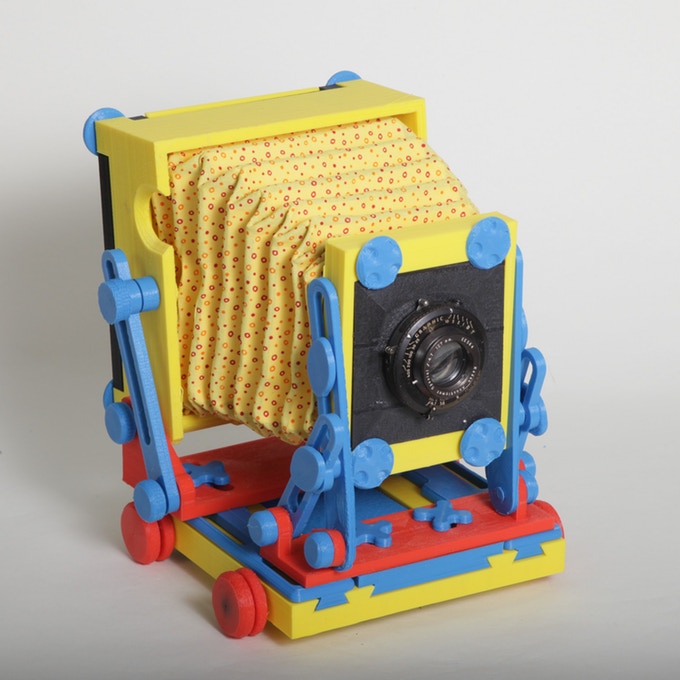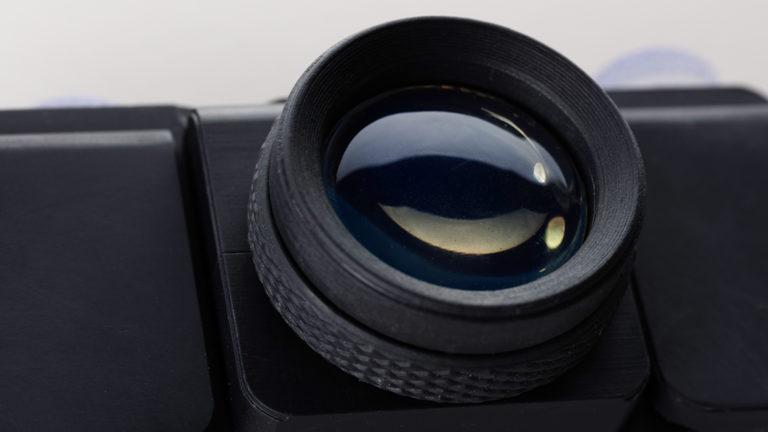Many of the people who still use cameras are makers and tinkerers, as well, and 3D printing is playing a role these days in both building and modifying cameras. Just a few months ago, maker Alexander Gee 3D printed what may be the first Sony E-Mount 35mm film camera, and another maker named Clint O’Connor even 3D printed a classic pinhole camera.
Photographer Drew Nikonowicz recently concluded a successful Kickstarter campaign in which he raised well over twice his funding goal for the Standard Camera, a 4×5 3D printed view camera that you can build yourself.“The 4×5 was born out of a genuine excitement of photography and making things,” said Nikonowicz. “But I was also thinking ahead to when I graduated and I wouldn’t have access to the school’s equipment anymore.”
The level of enthusiasm shown for Nikonowicz’s Kickstarter campaign shows that there is quite a large base of people out there who want old-fashioned cameras, and are excited about the idea of creating them through 3D printing.
Another Kickstarter campaign is offering the Cameradactyl, another 3D printed 4×5 camera that was created by Evan Moses. For $225, backers can get a camera with custom colors. Moses has also raised well over twice his funding goal with almost two weeks left in the campaign, and the camera’s fun colors started out as just a way to save money.
“I wanted to make the cheapest 4×5 and in keeping with that theme I just started buying the cheapest filament that I could find on Amazon,” said Moses. “It started out looking like a Barbie dream cam, then it got more green, then there was some yellow. I loved how wacky it was. I thought it was fun. It’s like a toy, but it’s a toy that you can take professional pictures with that are indistinguishable from pictures taken on a $2000 4×5, because ultimately, it looks like whatever lens you put on it.”
Speaking of lenses, 3D printing is also being used to develop much more advanced lenses, for cameras and for other optical purposes. Using stereolithography, you can 3D print a perfectly clear camera lens, meaning that it’s now possible for a camera to be 100% 3D printed. Clear resins have been developed with incredible optical properties, making 3D printed lenses more than just a novelty – they can actually be better, in some cases, than lenses created with conventional means. It’s even possible to create micro-lenses using 3D printing for purposes such as imaging the inside of the body.
For all the high-tech micro-cameras out there, though, there are at least dozens of plain old 3D printed point-and-shoot cameras like those made by Moses and Nikonowicz.“It is really amazing that I can make a camera for myself and there are a couple hundred people all over the world who are also interested in it,” said Moses. “It’s maybe not a good business decision to be making cameras that were designed in the 1800s on a 3D printer, but it’s so fun.”
Considering how well his Kickstarter campaign has done, it’s certainly not the worst business decision in the world. Many people want to own old technology as much as, or even more than, they want new technology – and new tech, like 3D printing, enables the creation of old tech. Call it technology coming full-circle, if you will.
This doesn’t mean that 3D printing is relegated to simply bringing back older photographic technology – it’s also being used to enhance some of the most newfangled cameras. There is a plethora of 3D printed GoPro mounts out there, as people use 3D printing technology to do what it does best – customize. 3D printing can also be used to make ordinary cameras perform better, often just for a few cents, by creating things like follow focus rigs, tripods, gear rings, and more. It has even been used to create assistive devices so that disabled people can pursue professional photography.
As an art form, photography is still new, compared to ancient techniques like drawing, painting and sculpting. But it has evolved perhaps more dramatically than any other art form in terms of the equipment used and the quality of the images. While the majority of people may be content to take photographs using their phones, there are still plenty of people out there who love cameras for their own sake – and 3D printing is allowing those people to bring even early camera models back, making the old new again.Discuss this and other 3D printing topics at 3DPrintBoard.com or share your thoughts below.
[Source: Popular Photography]Subscribe to Our Email Newsletter
Stay up-to-date on all the latest news from the 3D printing industry and receive information and offers from third party vendors.
You May Also Like
Further Understanding of 3D Printing Design at ADDITIV Design World
ADDITIV is back once again! This time, the virtual platform for additive manufacturing will be holding the first-ever edition of ADDITIV Design World on May 23rd from 9:00 AM –...
3D Printer Maker EVO-tech Reborn as NEVO3D — Once More With Feeling
EVO-tech was a 3D printing service and original equipment manufacturer established in 2013 and based in Schörfling am Attersee, Austria. The company produced high-quality material extrusion systems featuring linear bearings,...
3D Systems Brings 3D Printed PEEK Cranial Implant to the U.S. with FDA Clearance
For more than 10 years, 3D Systems (NYSE:DDD) has worked hand-in-hand with surgeons to plan over 150,000 patient-specific cases, and develop more than two million instruments and implants from its...
CDFAM Returns to Berlin for Second Annual Symposium
The second CDFAM Computational Design Symposium is scheduled for May 7-8, 2024, in Berlin, and will convene leading experts in computational design across all scales. Building upon the first event...




































